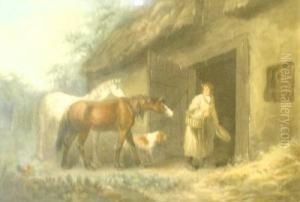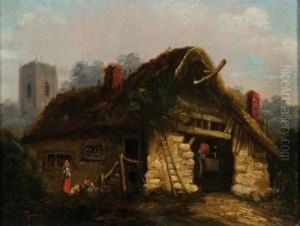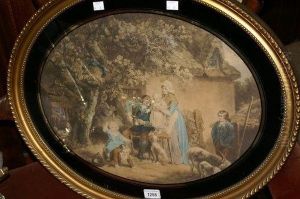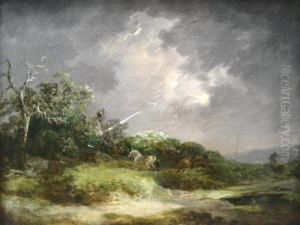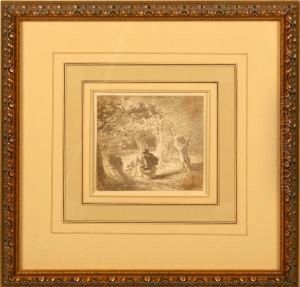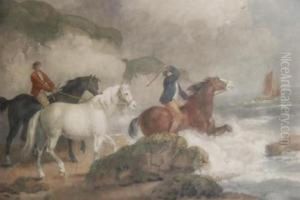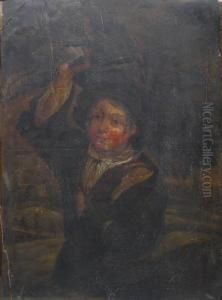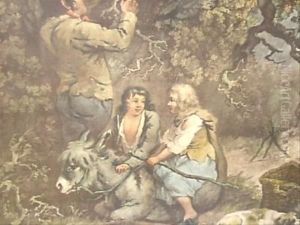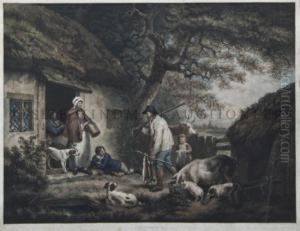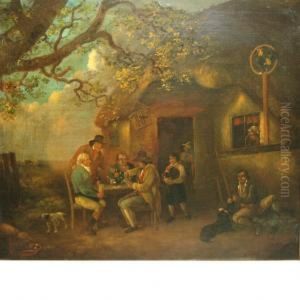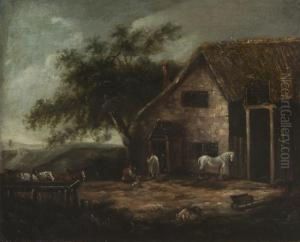George Moreland Paintings
George Morland was an English painter of animals and rustic scenes, born in London on June 26, 1763. He was the son of Henry Robert Morland, an artist who specialized in genre scenes, and his wife. Morland showed prodigious talent from a young age, having been immersed in an artistic environment through his father’s work and instruction.
Morland began his career at an early age, exhibiting at the Royal Academy when he was just ten years old. Despite his father's somewhat exploitative treatment, which involved keeping him in a sort of artistic 'captivity' to produce works, Morland’s skills developed rapidly. By the age of 17, he had set up his own studio and was producing works that were highly sought after. His subjects often depicted the English countryside, animals, and the lives of common folk, which were popular themes in the late 18th century.
Morland’s style was naturalistic and his artworks were characterized by their lively depiction of rustic scenes, often imbued with a sense of narrative. His use of color and adept skill at portraying light and shadow gave his paintings a remarkable lifelike quality. His paintings of animals, particularly horses, dogs, and livestock, were notable for their vitality and accuracy, and he is often credited with influencing the development of animal painting in England.
Despite his success as an artist, Morland’s life was marked by financial irresponsibility and personal struggles. He was known for his heavy drinking, and his life was also plagued by debt, leading him to spend time in debtor's prisons. These personal challenges, however, did not prevent him from producing a large body of work, which included over 4,000 paintings, drawings, and prints.
George Morland's tumultuous life came to an early end when he died in a London tavern on October 29, 1804, at the age of 41. His paintings continued to be popular after his death, and his works have been collected and admired for their charming and bucolic depictions of English rural life. Morland’s legacy includes not only the vast number of artworks he produced but also his influence on the genre of animal painting and the naturalistic portrayal of rural scenes in English art.
